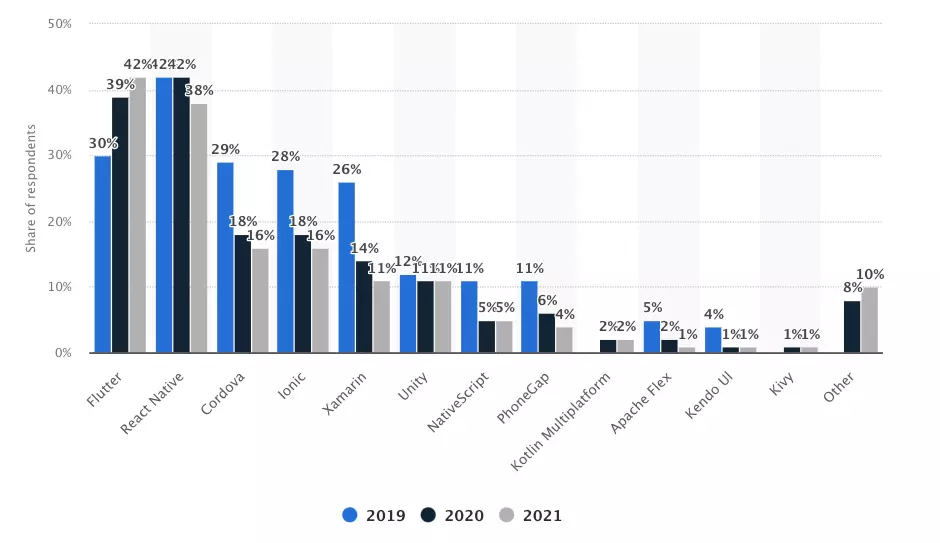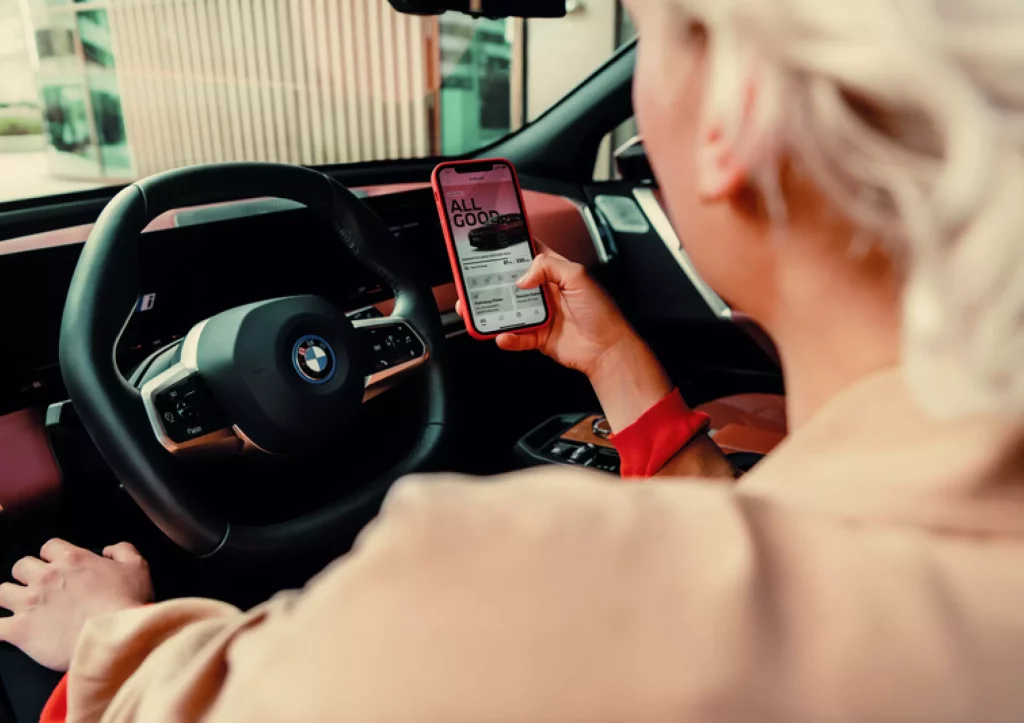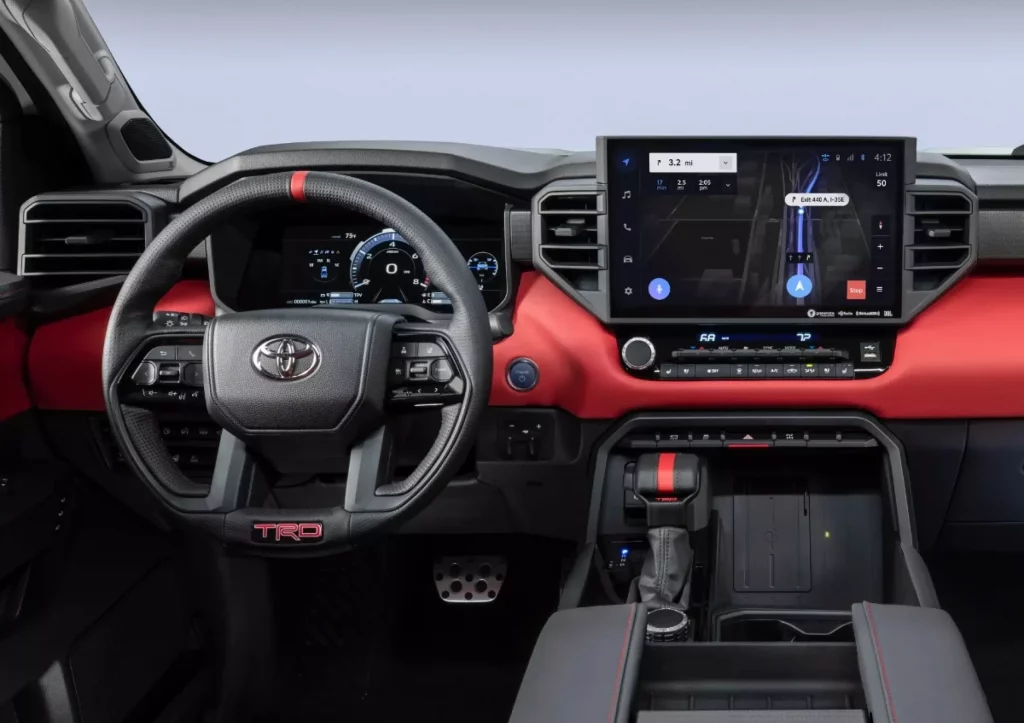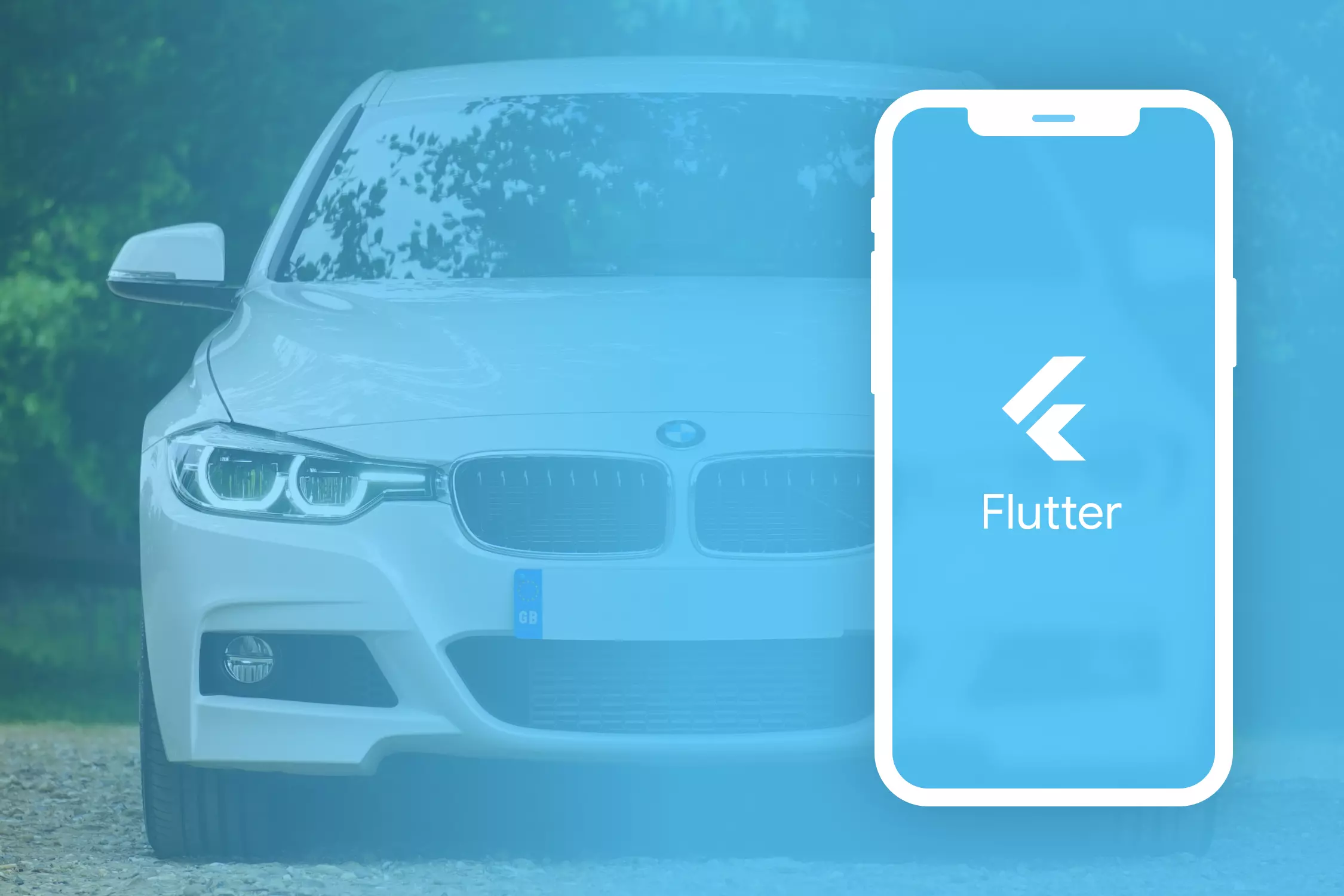Why Did BMW and Toyota Choose Flutter for Automotive App Development?
- Business
- October 18, 2022
Developing a cross-platform automotive application is a task that calls for a blend of constant brainstorming, creative approaches, usability, niche, and the technology that is going to nurture the application throughout.
Cross-platform applications are now one of those essential things that businesses have to conduct to help themselves merge with the trends that the market follows. But, let’s talk about the technical side of creating a cross-platform app; as we take a wide look, you also get to know how a particular programming language goes well with its respective industry.
Elaborating on this statement, we thought of chatting with you about how flutter is an ideal framework for the automotive industry. In order to justify the previous statement as well as the core aspect of this article, why don’t we actually dig deeper into the concept of flutter app development? Let’s get cracking.
The Scope of Flutter in the Market
According to Statista’s survey, Flutter is the most popular cross-platform mobile framework used by multinational developers. Based on the survey, 42% of software developers use Flutter as their go-to language.

Yet another survey by Statista suggests that it tops the list of the most used libraries and frameworks among the developer community, globally, as of 2022.
Why BMW and Toyota Chose Flutter for Automotive App Development?
Here’s what these top brands think about their collaboration with Flutter:
BMW’s merger with Flutter
All this while, BMW’s mobile app team prioritized the iOS version of their vehicle companion app – the BMW & MINI Connected apps. Yet, in 2018, they discovered that the feature and design dissimilarities between their iOS and Android offerings had expanded and how. They urgently needed to get an optimal solution, so that the apps offered the same functionality to all consumers, regardless of mobile OS, BMW, and MINI brand, without seriously inflating costs.

As it was a matter of making the app compatible and responsive for all operating systems. A cross-platform solution was evaluated. The team initiated the analysis of finding out the best cross-platform frameworks, including Flutter.
In the beginning, the team was worried that Flutter was not yet mature enough for the scale at which BMW required it to operate, so they designed various proofs-of-concept with each of the other frameworks. However, all the other platforms failed to surprise them except for Flutter which was found viable in every way from development to UX point of view.
Toyota’s merger with Flutter
At Toyota, every aspect of the driving experience is being highly taken care of, right down to the on-screen infotainment systems on the dash. While Toyota always followed the process of developing their in-vehicle technology by their in-house development team, this time they were pretty curious about Flutter and wondered how it could help them revamp the user experience for their drivers.

The customers of Toyota always expect the same premium level of performance in their infotainment systems as they do from the driving experience, so it was quite necessary that the on-screen experience goes along with the Toyota look and feel.
All thanks to Flutter’s highly competent rendering engine and features such as AOT compilation, the team felt convinced that they could produce something that felt more like a smartphone app than a standard embedded system.
What Makes Flutter Ideal for an Automotive App?
Let’s discuss what makes Flutter different from other technologies. Here are certain points that we will be highlighting that will make you love flutter even more:
Flutter offers a native app feel in a cross-platform app
Generally, the native counterparts are better in terms of usability and performance when compared with cross-platform mobile applications.
But when it comes to the apps that are developed using Flutter, they are found quite viable and smooth. Because the flutter developers have the skill of developing an application that offers a native-like experience. The best part is that flutter does not need a JavaScript bridge like in the React Native framework to compile the code.
As they do not have to perform the additional step of compiling code with JavaScript so the process is less time-consuming; regardless of it, it offers a native-app-like experience to the end users.
Availability of ready-to-use widgets
There is no additional fuss about UI design as Flutter already contains various ready-to-be-used widgets with which the segment of UI does not call for a whole lot of time to put in, it can be used directly.
UI/UX designers have the flexibility to define these stylistic components of the UI like fonts, menus, forms, colors, and buttons with the help of Flutter widgets. Designers can even improvise these results and form complex elements by blending these widgets.
The widgets are equipped in 2 styles which are designed in accordance with Android and iOS design guidelines. Let’s learn more about these.
There are two types of widgets in Flutter:
Stateful widgets
Stateful widgets are a kind of widget whose state can be changed or modified after they are created. The flutter developers who have much experience can alter the states a couple of times by using different inputs, data, and variables.
Stateless widgets
Stateless widgets are those widgets that are exactly the opposite of stateful widgets as the name suggests. These states cannot be changed or modified once they are created. The flutter app developers are not able to change any variable, or button, or retrieve data as soon as the widget is ready.
Flutter also provides the additional advantage of developing custom widgets from scratch for the designers.
Cross-platform support
Flutter was created by Google with the aim of developing cross-platform applications that offer not exact but no less than native application experience for mobile, web, embedded, and desktop from a single codebase.
While doing cross-platform app development, the key issue is responsiveness i.e the UI patterns do get changed on different operating systems. But since Flutter uses the Skia rendering engine, the feel of a cross-platform application would stick to its originality whether it’s Android, iOS, macOS, and Windows.
This is the fringe benefit for all the flutter developers out there, the cross-platform ability of flutter does not enable them to create a separate codebase for different operating systems.
Hot reload
This feature of flutter enables the flutter developers to add the source code modifications directly into the working application. With this feature, the flutter app developers do manage to save a whole lot of time as they do not have to perform the tedious task of the compilation process which is pretty complex even if you are supposed to do any minor changes.
Google once highlighted that with the feature of hot reloading, flutter has gained huge momentum, this is one of the main reasons that has made flutter pretty popular in such a short period of time.
Google has got Flutter’s back
What do you expect the open-source UI software development kit to do? It is already doing nothing short of brilliant work! Well, the credit goes to the tech giant Google! Not only does flutter help developers to develop applications conveniently with good speed, but it also breaks the bars for the development of cross-platform applications.
Premium quality apps with less testing
When developers use the hot reloading feature of flutter, they are accessible to spot code anomalies and bugs in real time and fix them on the spot.
Hot reloading in flutter is the biggest reason why all the flutter developers code seamlessly and get to save ample time which is generally spent on testing the mobile app, accelerating the time-to-market (TTM).
Also, flutter app developers have the additional advantage of fixing app bugs in real-time, which makes the application work more efficiently and smoothly even though it’s running on any device: Linux, Windows, or iOS.
So, the end results are nothing but high-quality applications with less testing, that’s only possible when it’s developed with Flutter due to the single codebase and real-time bug fixing. That’s why flutter offers higher-quality applications with less testing.
The brilliant end-user experience with the Flutter app
As we have mentioned above, the ready-to-use widgets are absolutely competent to win users’ hearts in one go. By now we all are aware that flutter offers developers top-notch easily accessible widgets that are reusable and customizable.
Thus, Flutter developers can build an astounding user interface with the help of these easily accessible widgets, the icing on the cake is that you can merge the widgets with your creativity to offer a bespoke experience. This is what makes flutter offer an unforgettable end-user experience.
Dart with Flutter
The combination of Dart and Flutter is as good as that of Flutter with automotive app development. Dart’s top features like async-awaiting, strong typing, garbage collection, and a rich standard library are a great helping hand while developers develop apps with Flutter.
Moreover, Dart has many similarities with JavaScript in terms of its features and functionalities. Thus, developers have the feasibility as their time is not spent on trivial tasks.
Flutter is open source
Google has gifted developers a flutter in the form of a treat! Flutter is an open-source technology for software development. Open developer forums offer access to the documentation pretty easily along with a way to post issues.
The platform contributes majorly to keeping up with the flutter developers and managing the constantly changing number of developers who are regularly active on the platform. Apart from this, flutter is also a part of developers’ efficiency and productivity as it relatively reduces the project’s entire cost and time.
Flutter is the ideal framework for a startup
MVP is the acronym for a minimal viable product. A minimal viable product is nothing but the most basic version of the product or an application that does not contain all the features of the app at that stage. MVP is launched for the BETA test where a number of users will be taking an experience of the product by using the same.
The reviews and feedback of the users give a profound idea of what modifications are to be done, what are points of improvement, what users have loved the most so the team can continue to work on the same, and whatnot!
Flutter is the platform of choice for creating an MVP in the most budget-friendly manner. Therefore, Flutter is the prior choice of every SDK of startups for developing MVPs.
Own Rendering Engine
Well, as we have mentioned above already, flutter is nothing but a treat in the form of a framework. Flutter lets developers code conveniently and put their best efforts into the development process.
Flutter operates Skia to render itself on a canvas equipped by the platforms. As Flutter owns its engine, UI built-in Flutter can be released on any platform without any hurdle.
Flutter relies on its own vigorous engine to help developers streamline the complete development process and deploy the final thing in the market much faster and efficiently.
A Complete Guide to Creating the Flutter App for the Automotive Industry
By now you must be fascinated with Flutter! We have also emphasized using Flutter to create an automotive application. Let’s refer to this detailed guide to create the same:
1. Determine your goals: set your objective clearly
Before you actually begin with the process of flutter app development, you need to determine what made you choose flutter, and why you are creating the app with flutter.
Ask yourself a few questions regarding the objective behind creating the app and think if this framework seems compatible with your app’s objectives and niche.
Is the app’s business objective to boost revenue, increase customer retention, enhance brand awareness, gather data, or a combination of these and different elements? How will it help your users attain their objectives? You need to decide on all these things and reach the conclusion.
2. Conduct competitive analysis: learn about your rivals’ key strengths and weaknesses
Before you start developing your flutter automotive application, remember one thing: you are not the first one to pitch it; there are millions of existing applications in the market out there. To make your application stand out from the others, conducting a competitive analysis is a must!
First things first scrutinize the product and the key features of your competitors. What’s lacking in your application? What is making users switch to their offerings? What is something they are lacking and you are quite good at? And what…. So on!
Asking yourself these questions is going to help you get an extensive idea of what you need to add to your application, the point of improvement in your flutter automotive app, the points of praise in your app. All of it requires a hawked eye and further modifications.
In addition, the best way to please users with your app’s services is to speak to them directly. Conducting social media campaigns is what might help you with great insights about users’ likes and dislikes. In such situations, taking the help of the marketing team would allow you to get the best results.
3. Decide on the app’s features: what will drive users to choose your application over others?
When you are deciding on the features of your flutter automotive application, you have got to focus on offering value over volume. That means, instead of providing a long queue of features, you can focus on providing your users with the features that bring value to them!
Generally, businesses tend to make the blunder of adding unnecessary features to their applications for the sake of outdoing their competitors, which causes compromising performance, overwhelming users, and destroying the user experience.
4. Opt for a development path: will you go for outsourcing or in-house flutter automotive app development?
Deciding on the development path is reasonably necessary as both outsourcing app development and in-house app development have their own merits and demerits. But a robust platform is rendered useless if the organization does not have the technological infrastructure that is required for timely and economical development, or if your teams have insufficient time or the skills to get the task done aptly.
In such a scenario, onboarding an experienced Flutter automotive app development outsourcing agency like Mindiventory can allow you to save the budget for hiring and training engineers, and we can also help you develop a top-notch app, by minimizing the risk of failure and seamlessly launching the ultimate product.
Read also: Which is Better for Mobile App Development: In-House or Outsourcing?
5. Go for BETA testing: learn how users are treating your applications
All that you have done by now seems like a big accomplishment to you, I am not denying that you have not put in a whole lot of effort! All I want you to do is create a mockup version of your app to know how your audience is interacting with your application.
This will give you valuable insights into your app, also it comes with the opportunity to create a better version of your app as you now have a brief idea of how the audience is treating your flutter automotive application.
You need to consider every point from the perspective of design, development, UX, business, and so on! Consider every relevant feedback imperative and try to implement it if it makes your app look giant in the market.
6. Create and test the prototype: does your product match up with the expectations of users and your vision?
When you have reached this stage, your dedicated developers will convert the mockup into a functional and dynamic prototype. This prototype is now all set to undergo a series of tests to validate app functionality and recognize all the significant and trivial issues of your application.
It’s pretty necessary to bear in mind that cross-platform apps could be a little more difficult and complex to test, given the variety of devices and platforms they must be compatible with. The fragmentation of operating systems adds another level of complexity to the application.
Having taken a look at the difficulty of this whole process, it’s quite imperative to make sure that development is done early on and the prototype goes for the testing phase as soon as it can be.
7. Stabilize and deploy the app: the final stage
The testing phase could cause you to face minor to major bugs in your app. In such situations, software engineers have to constantly keep on revamping the application till all present bugs are resolved and user acceptability test results do reflect positive responses.
Once all functionality has been completed and the bugs have been fixed, your app is ready for deployment! At this moment, you must plan for the process of implementation for your distribution strategy, accounting for app store approvals. You also have to plan for post-deployment monitoring of your app performance, usability, and capital.
Key Factors that Impact your Automotive App Development Cost
These are the prime factors that impact your end budget for the automotive app:
Type of application
The type of application you are developing is the most crucial factor that determines the cost of your application. You can conduct a thorough analysis and understand what are the features you will be adding to your application that will make it stand out from the other applications. So, the niche and type of your application decide what will be the end budget of the same.
Design components
Again, this goes with the same context; app’s type. The UI of your application will depend on its type; that’s why the team decides on the design components in accordance with the application’s type.
Development team
The factor of cost has a major impact on the industry as the cost factors vary by location; you will be seeing different budgets and it’s all because of the geographic location. So, if you are outsourcing automotive app development, this is the prime factor to be taken into consideration.
Tech stack
After the arrival of industry 4.0, the scenario of the automotive industry has taken a huge layer of transformation. The ruthless competition has given a whole new rise to the requirements for AR, VR, IoT, and AI technology usage in the app’s frontend and backend development. These technologies need developers with expertise and experience that eventually uplift the costs to develop an app.
Backend infrastructure
The backend infrastructure is the most important aspect of the app that must be competent enough. The automotive app infrastructure comprises app maintenance, app monitoring, database, networking, and data sharing via sensors.
Third-party integration
Utilizing pre-built software or ready-made APIs eases the task to implement functionality in the app without building it from the square. It helps you save a lot of development time and cost. There are multiple third-party plugins like payment gateway, push notification, analytics, SMS, hosting, and others available. They impact your cost to develop the automotive flutter app relatively.
How MindInventory Can Help you Develop an Efficient Automotive App with Flutter?
MindInventory is a top-notch Flutter app development company that can help you with cutting-edge app development services by integrating this – Google’s revolutionary framework.
Our team of experienced flutter app developers help you develop an automotive app that runs smoothly on all platforms and takes your business to the next level. We assure you that we will help you get multi-platform applications with seamless animations, gripping UI, and exemplary performance. We shall await to work with you as we can’t wait to be a part of your next big achievement.

So, Here We Are
We hope the session on automotive app development brought you valuable insights. Flutter has done wonders in no time, it does not make itself look like a rookie one in the world of technology!
The impact that Google’s gem has caused on the IT sector is worth praising the creator itself – Google every time we talk about the gem of technology!
FAQs on Flutter for Automotive App Development
There are many big brands that use Flutter like BMW, Toyota, ByteDance, Google Pay, eBay, Alibaba Group, and many more.
The BMW Group development team, which uses Flutter / Dart, is one of the most considerable brands globally. The application works brilliantly on both Android and iOS, and you can download it without any charges on both the Apple App Store and Google Play Store.
Certainly yes, flutter is growing exponentially! Given the popularity it has gained so far; the top brands have been adopting this language for their projects, and it definitely has a good chance to be standing in one of the top technologies in the coming years.













